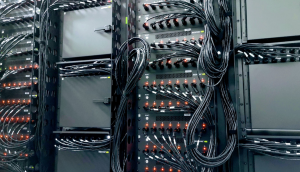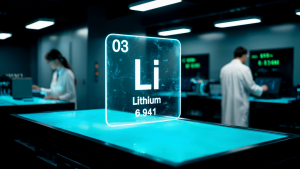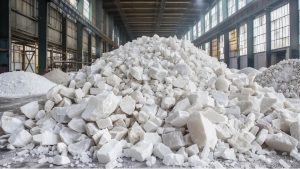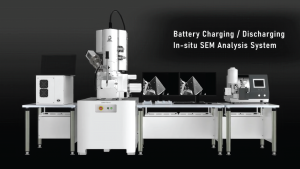- Because of the intermittent nature of renewable generation, long-duration storage at low costs is needed to decarbonize the electrical grid.
- Due to the fact that renewables have a near zero marginal cost of energy production, there is enormous opportunity for energy storage systems, which can offer load shifting, peak shaving, and operational flexibility in addition to reducing the need for new transmission lines.
- While Li-ion batteries are able to provide 4–10 hours of storage, their supply chain risks and relatively high costs make them unsuitable for large-scale long-duration grid storage.
- Green hydrogen, molten salt systems, metal-air batteries, flow batteries, mechanical/kinetic energy storage, compressed air storage, and gravity based storage show promise but are still in the early stages of development.
Long-duration storage in the electrical grid helps to store energy when the supply is high and demand is low and discharges that stored energy when the demand is high and supply is low. In order to unlock the potential of renewable energy, it is critical to smooth out its intermittency by decoupling the supply and demand of energy generation and consumption in the electric marketplace. As opposed to short-duration storage (4 hours or less), long-duration storage can store utility-scale energy for a few days to a few weeks. Building gigawatts of renewable energy is a sure way to rapidly decarbonize electric grids in the US and across the world, but we can not build renewables indiscriminately without providing for long-duration storage alongside. According to the Department of Energy (DOE), long-duration energy storage requires a 90% reduction in cost compared to the 2020 baseline cost of Li-ion batteries, with at least 10 hours of energy storage capacity and greater than 10 years of life, in order to be commercially viable. For comparison, in 2020, typical Li-ion batteries cost $400/kWh and have only 4 hours of energy storage capacity.
The percentage of energy California produces from wind and solar increased from 3% in 2010 to 28% in 2020 and continues to rise steadily. One unique characteristic of renewables is its near-zero marginal cost of energy production. Unlike traditional generation, no fuel is needed to produce the electricity, and, as a result, renewables are incentivized to generate electricity whether demand is strong or weak. This changes the economics of the energy market and opens up a huge opportunity for grid storage technologies. With these technologies, grid operators can allow wind turbines and solar farms to produce energy when the wind is blowing and the sun is shining and store that excess production in long-duration storage. When the demand for electricity rises in the evening hours, the stored electricity can then be brought online until the demand subsides. In this way, the intermittent nature of renewables has created an entirely new market for storage solutions. For grids with larger amounts of deployed renewable capacity, new technologies can offer the following benefits:
- Load shifting, shifting the supply of electricity later in the day to meet the demand, and peak shaving, eliminating short-term demand spikes during periods of high demand
- Reduced need for new transmission lines
- Operational flexibility for grid generation during inclement weather, without resorting to peaker plants
- Reduced need to overbuild renewable energy capacity, which would otherwise be necessary for an all-renewable grid
New grid-storage technologies should be:
- Reliable / Resilient
- Dispatchable
- Scalable
- Low Cost
Let’s unpack this. Reliable grid assets can act as an insurance policy for the grid operators, providing redundant storage capacity for long duration weather events and emergencies. Reliability and resiliency are must-haves for any new grid-storage technology. Dispatchability means that the grid asset can ramp up or down to follow grid demand. Not all storage technologies can be scaled for solutions in different energy markets. For example, pumped-hydro works only for certain geographies, specifically where a body of water and elevation are available. Similarly, concentrated solar works only where there is plenty of sunlight and not enough wind to disturb the concentrating mirrors. Finally, low cost is absolutely crucial for storage and renewables to be competitive in a market economy. It should not be more expensive to deploy and operate a storage technology over its lifetime in conjunction with renewables compared to conventional generation technologies.
Let’s go over some of the commercially available long-duration storage technologies and their characteristics. There are five main categories of energy storage systems:
- Thermal: This includes sensible (changing temperature) and latent (constant temperature) heat storage as well as thermo-chemical energy storage. These systems all work by storing excess electrical energy as thermal energy and then reversing the process and converting that thermal energy back to electrical energy when it is needed–or simply providing that heat for industrial or residential use. The efficiency and cost may vary depending on the technology, but most of the systems in this category come with good reliability and degradation. However, some of these thermal storage options have lower dispatchability in that they are unable to accommodate high ramp rates and may have limited scalability. One prominent example of thermal technologies is molten salt thermal storage used in conjunction with concentrated solar systems. Sand batteries that store heat for district heating are also a promising development.
- Mechanical: The most common types of mechanical storage are flywheel and compressed air energy storage systems. Although both of these technologies hold great promise, we have yet to see the successful deployment of a large number of mechanical storage systems on the US grid. While flywheel technologies have traditionally operated on the timescale of minutes, frictionless flywheels with a very high moment of inertia hold promise for extending the duration and 4-hour commercial systems have been announced. As of 2018 only 0.6% of total electricity storage in the United States used some form of mechanical energy storage.
- Electrochemical: Batteries, including Li-ion and flow batteries fall into this category. New battery chemistries have been steadily pushing down the cost of long duration storage. The biggest advantage of this category is scalability and modularity. The architecture and power electronics make it straightforward to connect battery cells electrically in series and in parallel, providing a great deal of flexibility for system integration. The future of batteries in stationary storage will depend on the technology’s ability to scale and capture a large swath of the market, especially when paired with renewable energy. In fact, battery storage projects have been going up alongside many renewable energy installations in recent years. Metal-air and flow batteries are two examples of new technologies for long-duration storage. Li-Ion is the most prominent example of this category; however, it is used mostly for applications requiring only 4–10 hours of energy storage.
- Gravity: This category includes pumped hydro and potential mass storage systems. These technologies typically have high efficiency, but the systems are usually custom built and often require special conditions like water and elevation. In the absence of these geographic features, some even incorporate their own cranes and elevators to provide potential energy storage (at a lower density than electrochemical systems).
- Chemical: Non-battery chemical storage systems, such as green hydrogen and green ammonia, make up their own category. These systems have the potential for excellent dispatchability if paired with generation technology, such as fuel cells, linear generators, or turbines. Of course, this generation technology is only carbon neutral when using renewable fuels like green hydrogen and green ammonia. However, the cost of producing these green fuels needs to come down dramatically over the next decade in order for them to be commercially viable.
Storage is an essential part of the modern electrical grid. Today, pumped hydro makes up nearly 75% of the energy storage capacity in US grids, followed by Li-ion batteries at roughly 20%. Pumped hydro is a reliable and dispatchable energy storage technology with a lifespan of over 90 years. However pumped hydro requires high upfront capital costs and may be difficult to scale due to the limited geographical availability and permitting required for new infrastructure projects. Nevertheless, with the climate legislation in the Inflation Reduction Act, we can expect to see GW of new pumped hydro coming online over the next decade. While Li-ion grid-scale batteries are useful, they have several disadvantages. First, the raw materials and supply chain for batteries have geopolitical risks. Also, the price point of Li-ion is not tenable for large-scale grid storage exceeding 10 hours of capacity. And finally, Li-Ion can only provide short to medium duration storage, not the hundreds of hours of capacity needed at scale.
Green hydrogen, molten salt systems, metal-air batteries, flow batteries, mechanical/kinetic energy storage, compressed air storage, and gravity based storage, among others, are still in their early stages of development and commercialization.
It remains to be seen which of these technologies will become commercially viable over the course of the next decades, but the policies, funding, and advances in the field suggest that they are on track to enabling a successful transition to a greener electrical grid.
Interested in publishing with BatteryBits? Apply at this link to become a contributor.
Join our discussion with other battery professionals at the community Slack space Battery Street!
Disclaimer: The views expressed herein are those of the author and do not necessarily reflect the views of Form Energy.




